The old town
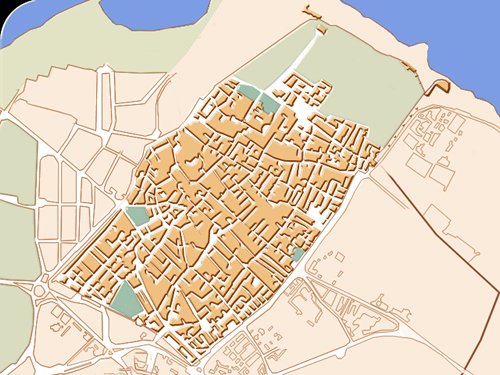
Salé was founded by the dynasty of Banu Ifran during the 10th century before it was taken over by Almoravids in 1028.
During the 11th century,thanks to its strategic position on the road connecting Rabat and Fès, the town knew a real prospering period during the reign of Al Mohads and later Banu Marin (14th century).
During the 17th century, the mass influx of Moslems and Jews who were expelled from Spain gave the city (the old Salé) a new vigour and put it in intensive rivalry with the neighbouring Rabat (then called the New Salé).At that time, Salé was famous for its dynamic maritime activity. The new migrants from Andalusia used it as center for their piracy activities. During the 18th century, Salé became a business center which allowed the extension of its influence to remote regions.
By the19th century, this dominant business role of the city ended and consequently became a city closed on itself. However, it remained during the 19th century and the foreign protectorate era a center of cultural movement as well as a base for the national movement against occupation.
While the city of Salé was considered as a powerful maritime force and being the cradle of the Arab-Andalusian culture, it is also considered as home of some prominent families, famous scholars and leading personalities in resisting movement against occupation .The various historical monuments in the city still witness its glorious past.
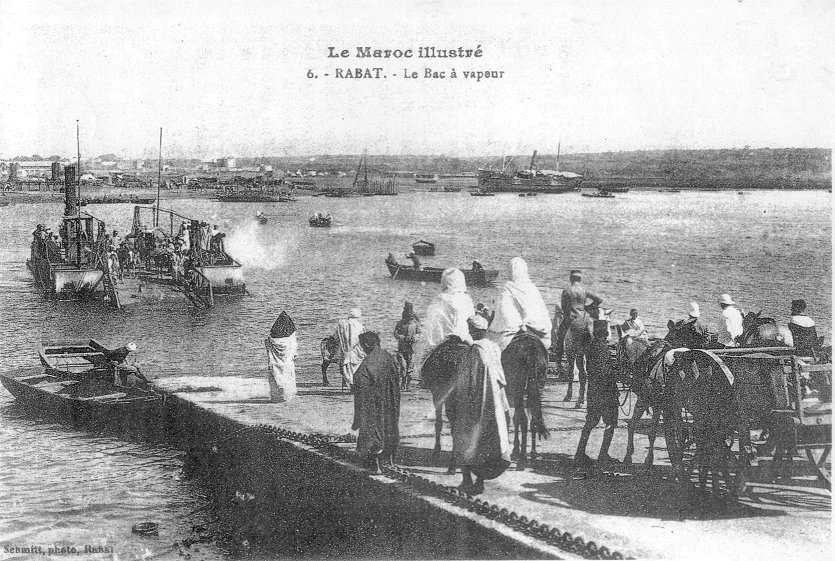
Gates of the old city:
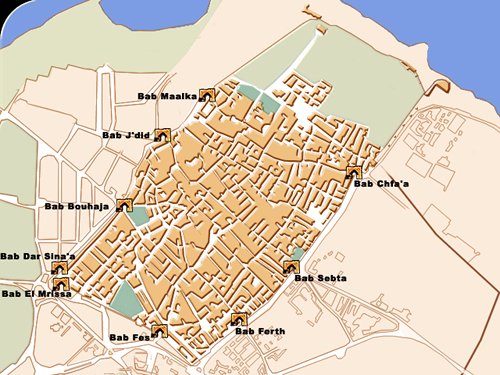
- Bab lemrissa, it is one of the biggest historical gates in Morocco. It was built by the Marinid Sultan Abu Youssef Yaakoub bin Abdelhaq during the period between 1270-1880, and the Sultan himself participated in the construction work. According to Nassiri, an architect called Mohamed bin Ali, who came from Sevilla, supervised the project of a fortified port that could be also used as shipyard and connected the city with Abu Regreg river.This port has a rock façade decorated with beautiful ornaments, calligraphy and artistic motifs in the shape of flowers. The port is fortified with two rectangular towers with a prominence of 2.20 meter and 3.50 meter wide and an arcade in the form of a horse-back, its opening is around 9 meter wide,and its summit is 9.60 meter high even if the level of the soil got higher with sand deposits.
- Bab Sebta, located at the northern part of the city, it is considered as one of the most impressive gates for visitors of Salé. Characterised by its huge tower from which the city affairs were managed during the reign of Abdelhaq Fenech (1757-1738). It was given this name because people had to use this gate to reach the route leading to Sebta.
- Bab Bouhaja, a large gate which was destroyed during the 60s. It is named after the venerable holy Andalusian man Sidi Ibrahim Bouhaja Randi who kept the hermits monastery (Zawiya Nossak) during the 14th century.
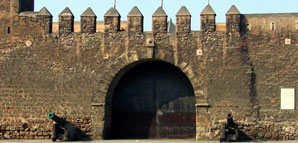
- Bab Dar Sinaa (Shipyard gate), one of Salé historical gates. It is known as Bab Alfaran (oven gate) or Bab Antar (Antar gate) because it contained an arsenal and weapons factory for the pirates. It was built in 1261 by the Marinid Sultan Abu Yousuf Yaakub Bin Abdelhaq under the supervision of the Andalusian architect Mohamed bin Haj Al Ichbili.
- Bab Chofaa, one of Salé historical gates. Characterized by the marvellous and harmonized design. It is 5 meter high and contains Bab sab’a banat (Seven Girls Gate).
- Bab M’alqa, one of Salé historical gates, it overlooks the cemetery and the sea. It is different from other city’s gates neither in form nor in size. It is a small gate which still has two wooden sides. Its importance was drawn from the fact that it was where the Sultan stayed during his visit to some places in the city.
- Bab Al Khamis, located at the Eastern side of the city. This name replaced the old name of Bab Fès (Fès Gate), it was the only entrance to the city from this side before it was definitely closed in 1991. It is a historical monument in Salé with two old canons. The entrance to the city from this side is reduced to a small side gate.
Towers of the old town of Salé:

- Borj Bab Sebta, it was built by the ruler Abdelhaq Fenech in 1738. It is the place from where the city had been ruled.
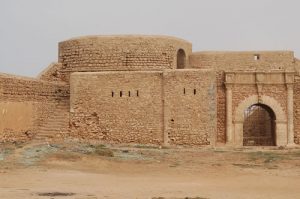
- Borj Domoue, or the old Seqala. It was built in 1759 by the sultan Sidi Mohamed bin Abdellah, It contains canons made of bronze. It is also called borj (tower) of Sidi Bin Acher.
- Borj Rokni , it is also called Al Borj Al Kabir (the Big Tower) or the New Seqala. It was established in 1853 by Abu Al Fadl Abdel-Rahman ibn Hicham.
- Borj Al Mellah, located near Bab Lemrissa.
- Borj Al Mothamin, it was so called because it consists of 8 sides.
Mosques of the old town:
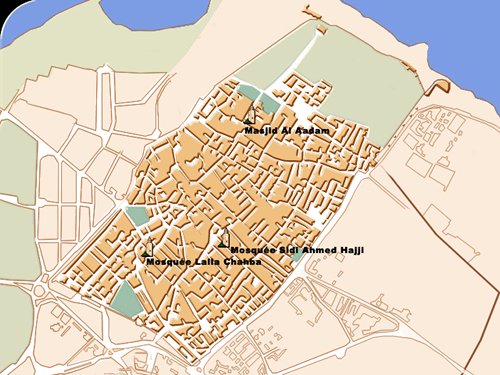
- The Great Mosque, the Great Mosque or what is known to the inhabitants of Salé as the Jamaa Lkbir (large mosque) is considered as a spiritual and scientific monument which characterizes this city. It is one of the greatest mosques in the Islamic world. It had been extended and reconstructed during the reign of AlMohads Sultan Abu Youssuf Yaaqub bin Youssuf Al-Mansur in 1196. The first scholar to be mandated to give the Friday preach during the reign of Yaaqub Al-Mansur was Justice Abu Mohamad Abdullah Ibn Soleiman AL Anssari, judge of Salé and Ribat Al-Fath. The Great Mosque was built on a vast surface exceeding 5070 m2, which covers a diamond-shaped square containing high walls with two praying rooms and three courtyards and many suites. It has the same design as Al Mohad mosques of comparable value of other great Islamic Mosques with its high pillars and different arcades and good design.
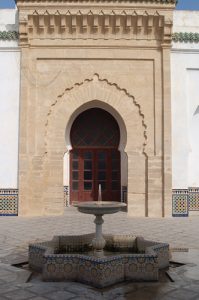
- Ashahbae Mosque, the second mosque which was built in Salé by Al Moravid Sultan Youssuf Ibn Tachafin during the second half of the 11th century. It was restored in the middle of the 20th century.
- Sidi Ahmad Hajji Mosque, sultan Mulay Ismail ben Ali Sherif ordered to build this mosque named Sidi Ahmad Hajji in the area of the large market in the old town, he was among the Righteous of Salé, he was also famous for being an ascetic and for participating in the liberation of the Mehdia fortress from the Spanish in 1681, he was a follower of the Gazullah way.
The shrines of the the ancient Sale town:
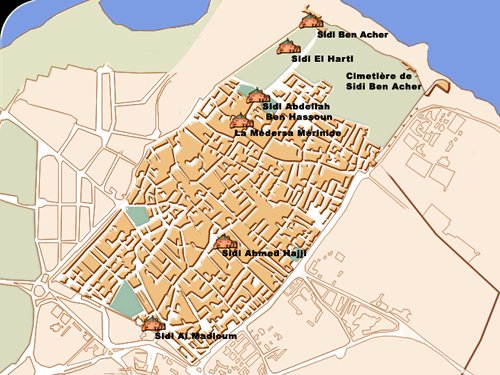
Salé town was famous for the presence of many corners and places of worship(zawaya wa ribatat) , and the most important corner in the town during Bani Marin age was the corner of the pious which was built by Abu Inan for strangers and visitors.
Ancient Salé includes now a large number of righteous pious people , ordinary people feel confused about some of their names. Also, their shrines get different degrees of interest and organization.
Some of them are well-known on the national level like the shrine of the righteous pious Sidi Abdullah Ben Hassun, whose name is associated to the convoy of candles. And the shrine of Sidi Ahmed Ibn Achir, who is famous among ordinary people by his capacity to heal visitors who suffer from epilepsy and mental diseases .There are corners which have seasonal activities especially in the ceremony of the birth of the prophet.
The majority of shrines in Salé are deserted places which poor and destitute people take as a lodging, others are not known except as names for streets.
The first corners and shrines in Salé are found in three large centers which are Talaa, Zenaata, and Leblida. These neighbourhoods were the core of the city during the age of Bani Achara. Also the most ancient shrines are there. When the Almoravids came, the city grew larger and they built Mosque Achahbaa. And at the age of Almuwahhidin, Burmada was built and they built the greatest mosque on the remains of Mosque Bani Al Achara. Yet part of these remains included the oldest righteous man of Salé who was Sidi Abdelhalim El Ghemad, who died in 590 Hijri/ 1139.
During the Marinid age, more shrines appeared in Talaa, Zenaata and Bab Hssain. The reason behind that was the Marinid School which was built by Abu Elhassan in the year 1430. Besides, the greatest mosque which was the centre and the core to all students. Since the age of Bani Al Achara, judges and scholars used to give lessons. The attention of Abi Elhassan helped in that, so he brought necessary water for ablution to the school and the mosque through the arcades of Salé.
Shrines and corners also spread in Bab hssein when Abu Anan built the school which became a hospital.
The geography of shrines was limited to this site until the 16th century, when Sidi Abdullah Bin Hassun came from Salas, versions refer to unanimity he got from people and the righteous people be them alive or dead, and he was appointed a Sultan on them in Salé. Among the righteous of Talaa Sidi Muhammad Mfadel 1071 Hijri, and Sidi Ahmed Taleb 1072 Hijri.
The last of Sale’s righteous people to die was Ahmed Hajji 1103 Hijri, and his son Abdullah Eljazzar 1122 Hijri and Elhassan Elaydi 1131 Hijri. But as to the oldest among them outside the walls, we have the shrine of Sidi Bel Abbas 540 Hijri/1145, who chose seclusion after he donated all his property. His shrine was built two centuries after his death by an order from Abu Anan, and was restored in the age of Moulay Ismail. The second was Abu Moussa Doukkali(died in 550 Hijri), he was also isolating himself , ate sea fish and herbs . At first, he lived in the” hotel of oil” in his time, which became a school and a hospital at the age of Abu Anan, then it became a house for the judge after the first world war. Abou Moussa Doukkali died in Riadh Bani Achraa, then Melala Bent Ziadat Allah took his ashes after one week and built on them a huge shrine, which was restored after five centuries during the age of Moulay Ismail.
Corners (zawaya) spread in Sale at the beginning of 19th century, they are branches of national corners and ways. The sheikhs of some of them came from outside Salé , and were strongly attached to them like zawia Touhamia in ESSAF, which was founded at the age of Sidi Mohamed Ben Abdullah. The origin from Touhama is from Wazzan. The first one who came from this family to settle in Salé was Moulay Ibrahim from a sign of the righteous pious Sidi Elhaj Laarbi Elwazzani.
Among the Zawaya, Whose headquarters dates back to the 6th century /12th , Zawiya Darqawiya. In the origin it is the shrine of the righteous pious Abu Ali Chrichi who used to cry a lot. Then it moved to the followers of Moulay Ahmed Seqalli El Fassi in the Marinid’s age who built the Zawiya, then it moved in the 19th century to the followers of Moulay Larbi Darqawi.
Among the Zawaya which were recently built in Salé, the Kettani Zawiya. It was designed and built in 1902 by the founder of the Ahmadi Kettani way Sidi Mohamed Ben Abdelkbir Elkettani, which was originally a special luxurious house of Ben Said family.
(Information about Zawaya and shrines is taken from the website of the local council of Sale prefecture.)
